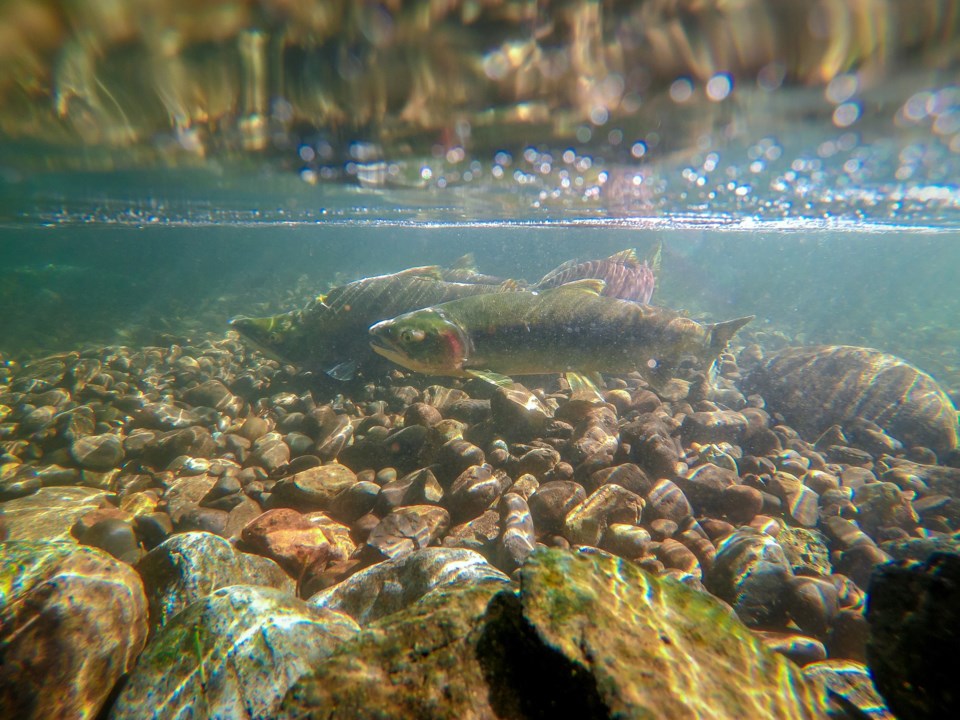In the 1990s, scientists restoring streams around Seattle, Wash., noticed that returning coho salmon were dying after rainstorms. The effects were immediate: the fish swam in circles, gasping at the surface, then died in a few hours.
Over the next several decades, researchers chipped away at the problem until in 2020 they discovered the culprit: a chemical called 6PPD-quinone that forms when its parent compound, a tire additive called 6PPD, reacts with ozone.
6PPD-quinone kills coho salmon at extraordinarily low concentrations, making it one of the most toxic substances to an aquatic species that scientists have ever found.
Today, a growing body of evidence shows that tire additives and their transformation products, including 6PPD-quinone, are contaminating ecosystems and showing up in people.
Now, alongside the researchers who made that initial discovery, we’re calling for international regulation of these chemicals to protect people and the environment.
Our recently published research outlines the hazard posed by tire additives due to their demonstrated toxicity and high emissions near people and sensitive ecosystems, how current regulations don’t do enough to protect us, and how we can do better.
Tires are complex chemical products
Tires are far from simple rubber rings. They’re complex chemical products made to endure heat, friction and degradation. For example, 6PPD is in tires to protect them from ozone, which causes tires to crack.
Unfortunately, little attention was paid to these chemicals until scientists discovered the impacts of 6PPD-quinone and realized these chemicals could be hazardous.
Once they started looking, researchers found many tire additives, including 6PPD-quinone, in streams near roads, in dust and in the air — wherever there are roads, there is tire additive contamination.
Although 6PPD-quinone is most lethal to coho, it is also lethal to several other species of salmonids, and it may be toxic to aquatic plants and terrestrial invertebrates.
We know that exposure to tire wear particles and the chemicals that leach from them affect other aquatic species that are used as indicators of toxicological risk. This widespread contamination occurs because emissions of tire additives are high.
Every time we drive, we produce particles from tire wear, and those particles release additives into the environment. Tires lose 10-20 per cent of their mass over their lifetime. That means driving emits over one million tonnes of tire particles to the environment in both the United States and the European Union every year.
All those tire particle emissions represent a large source of chemicals to the environment and high human exposures, especially in cities. Researchers have started to find tire additives and their transformation products in people.
Although more research is needed on how tire additives affect people, 6PPD is classified as a reproductive toxin, and other tire additives and their transformation products have been associated with increased cancer risk in exposed populations.
Emerging research with mice indicates that some tire additives and their transformation products impact mammals, with studies showing neurotoxicity, damage to multiple organ systems and impaired fertility from 6PPD-quinone.
That’s why our team of environmental scientists is calling for urgent global action.
Plastics treaty
We’re not arguing that tires shouldn’t have additives, but those additives must be safer. That’s why we are calling for a process that replaces 6PPD and other tire additives with safer alternatives. Tire additives should be nonhazardous across their entire life cycle, and manufacturers should be transparent about what tire additives they are using and what their hazards are.
Next week, governments from around the world are meeting to negotiate a global treaty to end plastic pollution. We call for tires to be explicitly included in the treaty, and we want to see strong measures around plastic additives including tire additives.
We want to see:
- Deadlines for phasing out hazardous chemicals;
- The ability to mandate alternatives;
- Transparency around the chemicals used in tires;
- Independent panels for evaluating additive alternatives and for assessing additive effects;
- Dedicated working groups focused on tire additives due to their large emissions and demonstrated ecological impacts.
The good news is that we’ve done this before. After scientists found a hole in the ozone layer, the world banded together under the Montréal Protocol to phase out the most damaging chemicals to the ozone layer. Today, the ozone layer is recovering, averting millions of cases of skin cancer and helping combat climate change. We need the same level of ambition and urgency now.
Making tires nonhazardous for the environment would help safeguard coho salmon populations, restoring traditional foods to Indigenous Peoples across the Pacific Northwest and protecting a species vital for aquatic ecosystems.
Since roads are built where people are, reducing the hazard from tire particle pollution would reduce one source of exposure to potentially toxic chemicals, and ensure a future where fewer people are impacted by chemical pollution. It’s time for global action on tire additives, before their impacts become even harder to ignore.
Timothy Rodgers receives funding from the British Columbia Salmon Restoration and Innovation Fund.
Rachel Scholes receives funding from the Natural Sciences and Engineering Research Council of Canada, the Canadian Foundation for Innovation, the BC Knowledge Development Fund, and the BC Salmon Restoration and Innovation Fund.
Simon Drew receives funding from the British Columbia Salmon Restoration and Innovation Fund.



